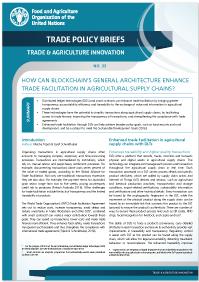
No. 33 How can blockchain’s general architecture enhance trade facilitation in agricultural supply chains?
10/09/2019
This brief provides an overview of the potential of distributed ledger technologies to facilitate transactions in agricultural supply chains through enhanced traceability, efficiency, transparency and accountability.
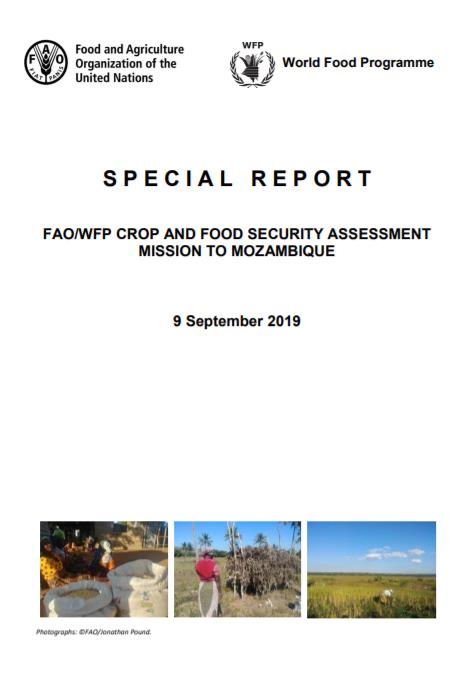
Special Report - FAO/WFP Crop and Food Security Assessment Mission to Mozambique - 9 September 2019
09/09/2019
In response to the impact of two intense tropical cyclones in central and northern provinces and substantial rainfall deficits in southern provinces, the Government of Mozambique requested an FAO/WFP Crop and Food Security Assessment Mission (CFSAM). The Mission visited the country from 13 to 26 May 2019, with the remit to evaluate cereal production in the 2019 agricultural season , assess the overall food security situation, estimate cereal import requirements in the 2019/20 marketing year (April/March) and determine any food assistance needs.
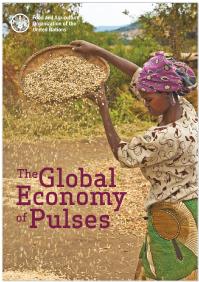
The Global Economy of Pulses
07/09/2019
The production, trade and consumption of pulses have seen substantial growth over the last fifteen years. This report examines the trends and patterns of this growth, and the factors that explain these for different kinds of pulses. The report presents an analysis of trends of consumption of pulses in different regions of the world and discusses the role that pulses can play in human nutrition. The report presents an analysis of the dynamics of growth of major pulses in different pulse-producing countries of the world. It describes the increasingly important role of trade in the global economy of pulses and presents an analysis of changing patterns of trade. The report argues that there is a pressing need to close the large gap between potential and actual yields, particularly on smallholder farms in South Asia and sub-Saharan Africa, by increased adoption of improved varieties and modern agronomic practices in all developing countries. This in turn requires a major thrust in agricultural research and extension, improving credit availability, and public investment directed at pulse production. The report discusses future prospects and policy imperatives for sustaining the growth of pulse production.
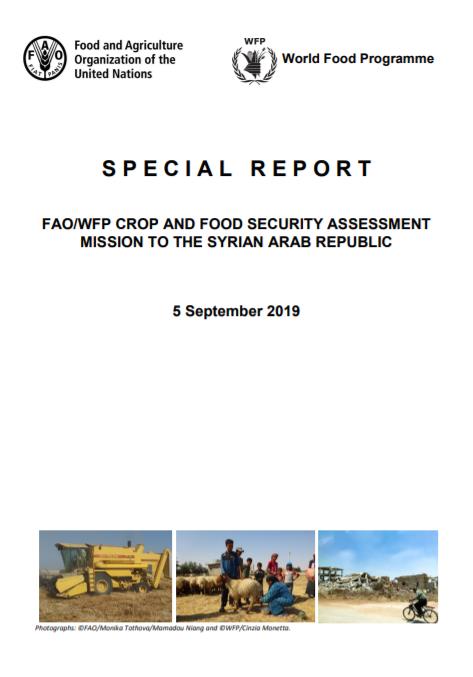
Special Report - FAO/WFP Crop and Food Security Assessment Mission to the Syrian Arab Republic - 5 September 2019
05/09/2019
A joint FAO/WFP Crop and Food Security Mission (CFSAM) visited the Syrian Arab Republic between 8 June and 4 July 2019 to estimate crop production and to assess the country’s overall food-security situation. On arrival in the country, the international members of the CFSAM team spent three days in Damascus prior to going to the field. During that time, joined by a small number of national FAO and WFP staff, they held meetings with the Ministry of Agriculture and Agrarian Reform (MAAR) and several other relevant ministries and state bodies of the Government of the Syrian Arab Republic. The team, consisting of national and international staff, then spent three weeks in the field collecting data and observing the agricultural and food-security situation in nine of the country’s 14 governorates. In Hama Governorate the team met national staff from two governorates, Raqqa and Idleb, which it was unable to visit for security reasons, to discuss the situation in those governorates. On return to Damascus the CFSAM team held meetings with the agricultural directors of Quneitra and Sweida, the two remaining governorates that it was unable to visit. The team also discussed its field findings and observations with the principal technical staff of MAAR. Prior to departure from the country, the Mission briefed the Minister of Agriculture and Agrarian Reform on its main findings.
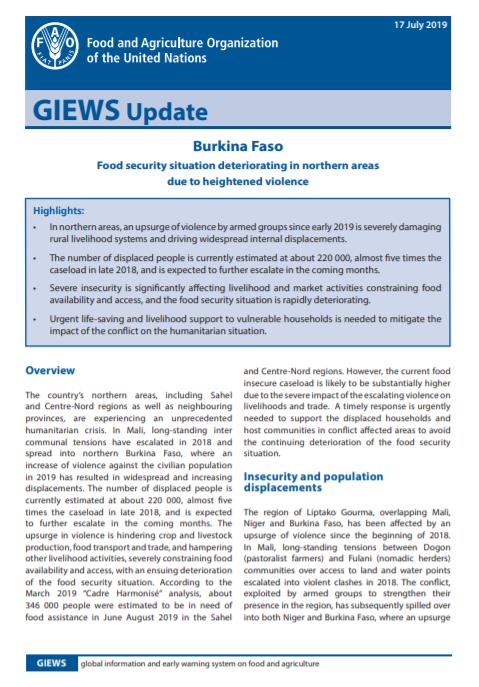
GIEWS Update - Burkina Faso, 17 July 2019
17/07/2019
In northern areas, an upsurge of violence by armed groups since early 2019 is severely damaging rural livelihood systems and driving widespread internal displacements. The number of displaced people is currently estimated at about 220 000, almost five times the caseload in late 2018, and is expected to further escalate in the coming months.
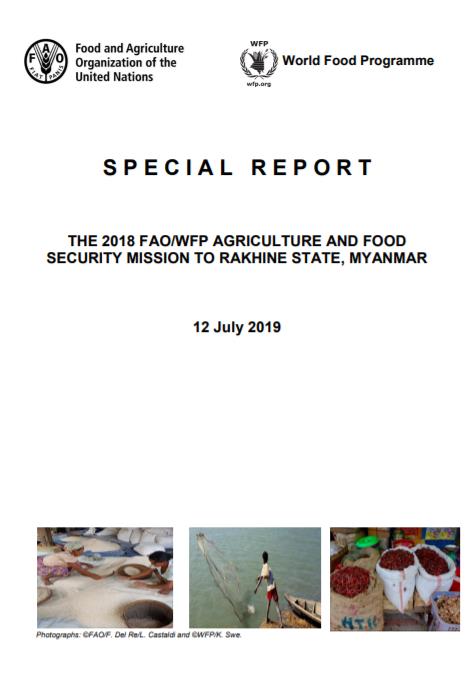
Special Report - The 2018 FAO/WFP agriculture and food security mission to Rakhine State, Myanmar
12/07/2019
Following an official request from the Ministry of Agriculture, Livestock and Irrigation (MoALI) of the Republic of the Union of Myanmar on 4 December 2017, a joint FAO/WFP Agriculture and Food Security Mission visited Yangon, Nay Pyi Taw and Rakhine State between 23 April and 15 May 2018. The Mission gathered impressions on the 2017/18 cropping season and the overall food security situation as well as observed preparations and conditions for the 2018/19 season.
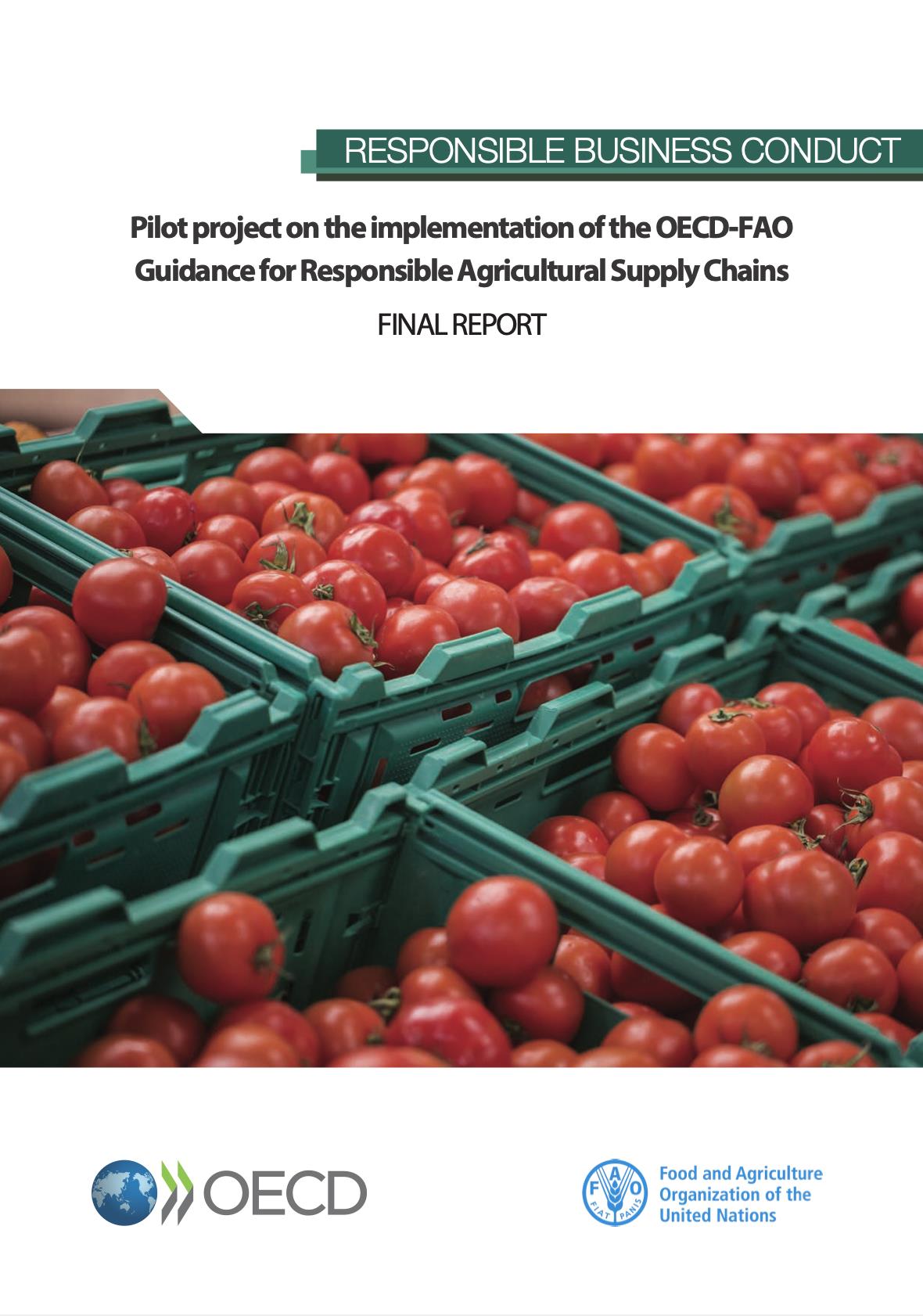
Pilot project on the implementation of the OECD-FAO Guidance for Responsible Agricultural Supply Chains
11/07/2019
This final report presents the key findings of the pilot project for testing the practical application of the OECD-FAO Guidance. It includes progress made over the pilot timeline, and summarizes the key lessons learned, good practices and challenges highlighted through the activities implemented with pilot participants throughout the duration of the pilot project. It provides conclusions and recommendations for various categories of staekholders.
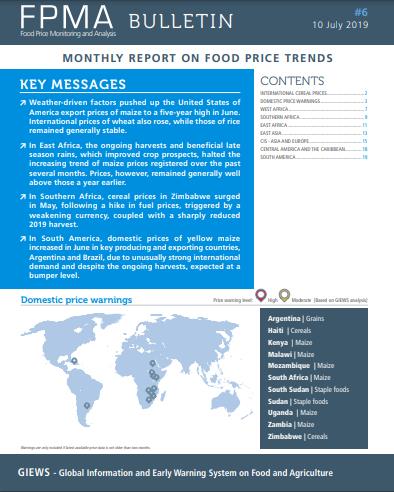
Food Price Monitoring and Analysis (FPMA) Bulletin #6, 10 July 2019
10/07/2019
Weather-driven factors pushed up the United States of America export prices of maize to a five-year high in June. International prices of wheat also rose, while those of rice remained generally stable. In East Africa, the ongoing harvests and beneficial late season rains, which improved crop prospects, halted the increasing trend of maize prices registered over the past several months. Prices, however, remained generally well above those a year earlier. In Southern Africa, cereal prices in Zimbabwe surged in May, following a hike in fuel prices, triggered by a weakening currency weakness, coupled with a sharply reduced 2019 harvest. In South America, domestic prices of yellow maize increased in June in key producing and exporting countries, Argentina and Brazil, due to unusually strong international demand and despite the ongoing harvests, expected at a bumper level.
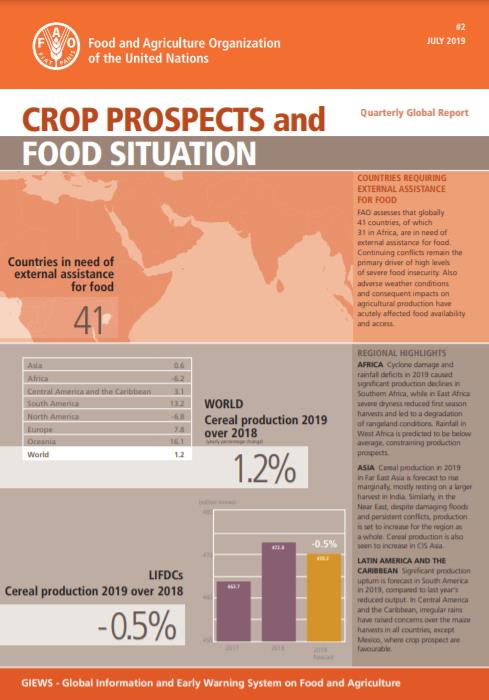
Crop Prospects and Food Situation - Quarterly Global Report, No. 2, July 2019
04/07/2019
FAO assesses that globally 41 countries, of which 31 in Africa, are in need of external assistance for food. Continuing conflicts remain the primary driver of high levels of severe food insecurity. Also adverse weather conditions and consequent impacts on agricultural production have acutely affected food availability and access.
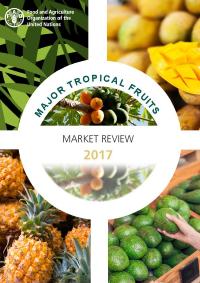
Major tropical fruits market review 2017
02/07/2019
A comprehensive analysis of production, trade, and prices of major tropical fruits
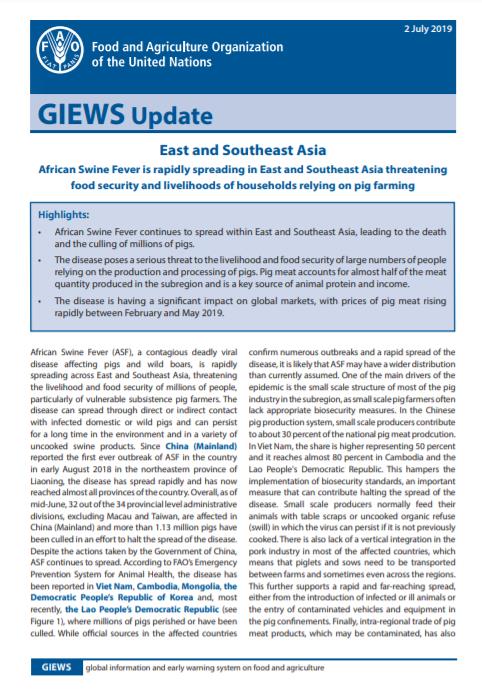
GIEWS Update - East and Southeast Asia, 2 July 2019
02/07/2019
African Swine Fever continues to spread within East and Southeast Asia, leading to the death and the culling of millions of pigs. The disease poses a serious threat to the livelihood and food security of large numbers of people relying on the production and processing of pigs.
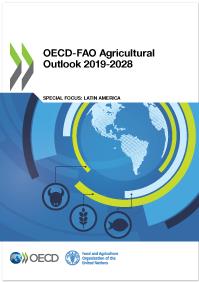
OECD-FAO Agricultural Outlook 2019-2028 - Main publication
24/06/2019
The Agricultural Outlook 2019-2028 is a collaborative effort of the Organisation for Economic Co-operation and Development (OECD) and the Food and Agriculture Organization (FAO) of the United Nations. It brings together the commodity, policy and country expertise of both organisations as well as input from collaborating member countries to provide an annual assessment of the prospects for the coming decade of national, regional and global agricultural commodity markets.This year's Special Feature will focus on agricultural development in Latin America.
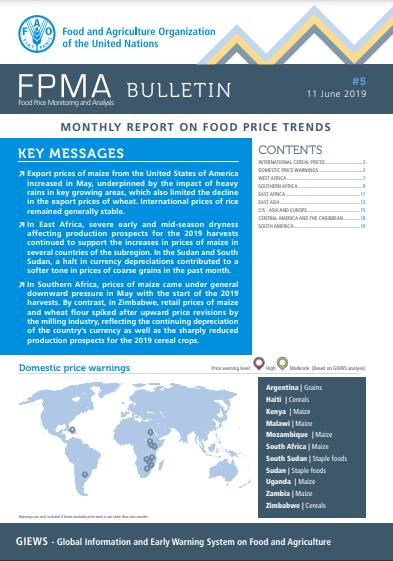
Food Price Monitoring and Analysis (FPMA) Bulletin #5, 11 June 2019
11/06/2019
Export prices of maize from the United States of America increased in May, underpinned by the impact of heavy rains in key growing areas, which also limited the decline in the export prices of wheat. International prices of rice remained generally stable. In East Africa, severe early and mid-season dryness affecting production prospects for the 2019 harvests continued to support the increases in prices of maize in several countries of the subregion. In the Sudan and South Sudan, a halt in currency depreciations contributed to a softer tone in prices of coarse grains in the past month. In Southern Africa, prices of maize came under general downward pressure in May with the start of the 2019 harvests. By contrast, in Zimbabwe, retail prices of maize and wheat flour spiked after upward price revisions by the milling industry, reflecting the continuing depreciation of the country’s currency as well as the sharply reduced production prospects for the 2019 cereal crops.
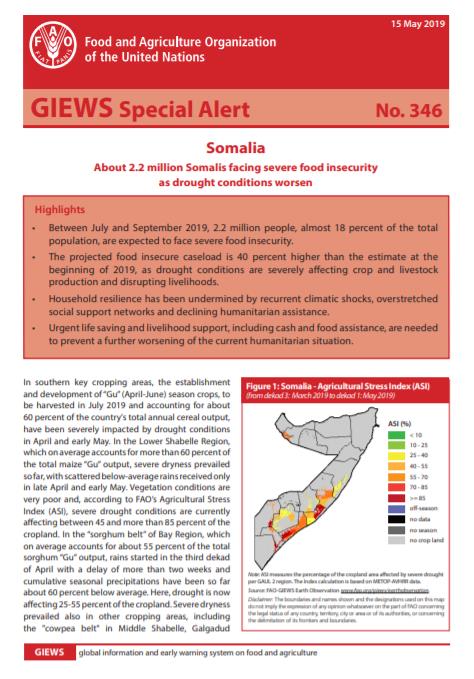
GIEWS Special Alert No. 346 - Somalia, 15 May 2019
15/05/2019
Between July and September 2019, 2.2 million people, almost 18 percent of the total population, are expected to face severe food insecurity. The projected food insecure caseload is 40 percent higher than the estimate at the beginning of 2019, as drought conditions are severely affecting crop and livestock production and disrupting livelihoods. Household resilience has been undermined by recurrent climatic shocks, overstretched social support networks and declining humanitarian assistance. Urgent life saving and livelihood support, including cash and food assistance, are needed to prevent a further worsening of the current humanitarian situation.
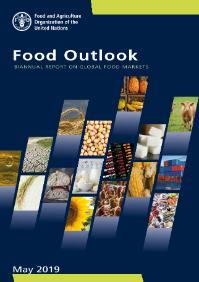
Food Outlook - May 2019
14/05/2019
Food markets in 2019/20 are bracing for some additional uncertainties beyond their own fundamentals. A fast-changing trade environment and the rapid spread of African Swine Fever constitute important challenges to overcome. However, prospects point to generally well supplied markets, which is seen to contribute to a lower food import bill in 2019.
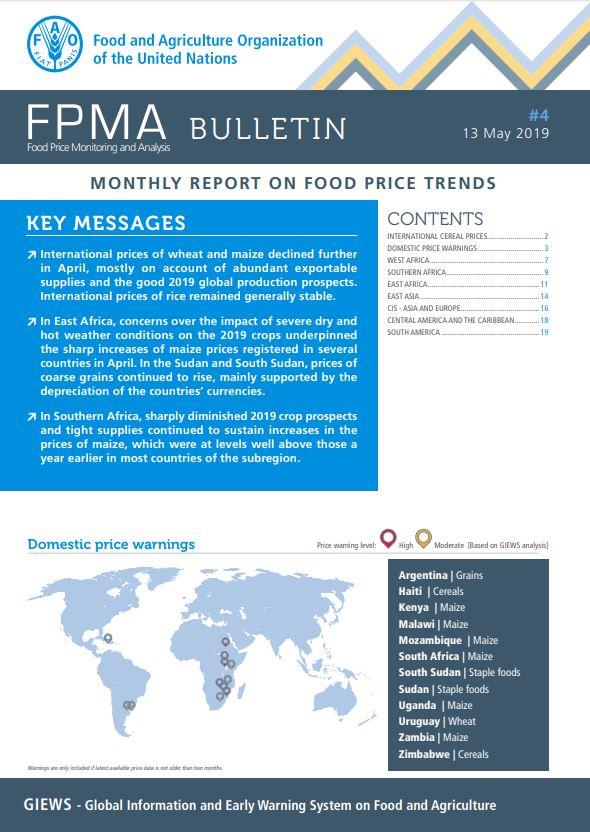
Food Price Monitoring and Analysis (FPMA) Bulletin #4, 13 May 2019
13/05/2019
International prices of wheat and maize declined further in April, mostly on account of abundant exportable supplies and the good 2019 global production prospects. International prices of rice remained generally stable. In East Africa, concerns over the impact of severe dry and hot weather conditions on the 2019 crops underpinned the sharp increases of maize prices registered in several countries in April. In the Sudan and South Sudan, prices of coarse grains continued to rise, mainly supported by the depreciation of the countries’ currencies. In Southern Africa, sharply diminished 2019 crop prospects and tight supplies continued to sustain increases in the prices of maize, which were at levels well above those a year earlier in most countries of the subregion.
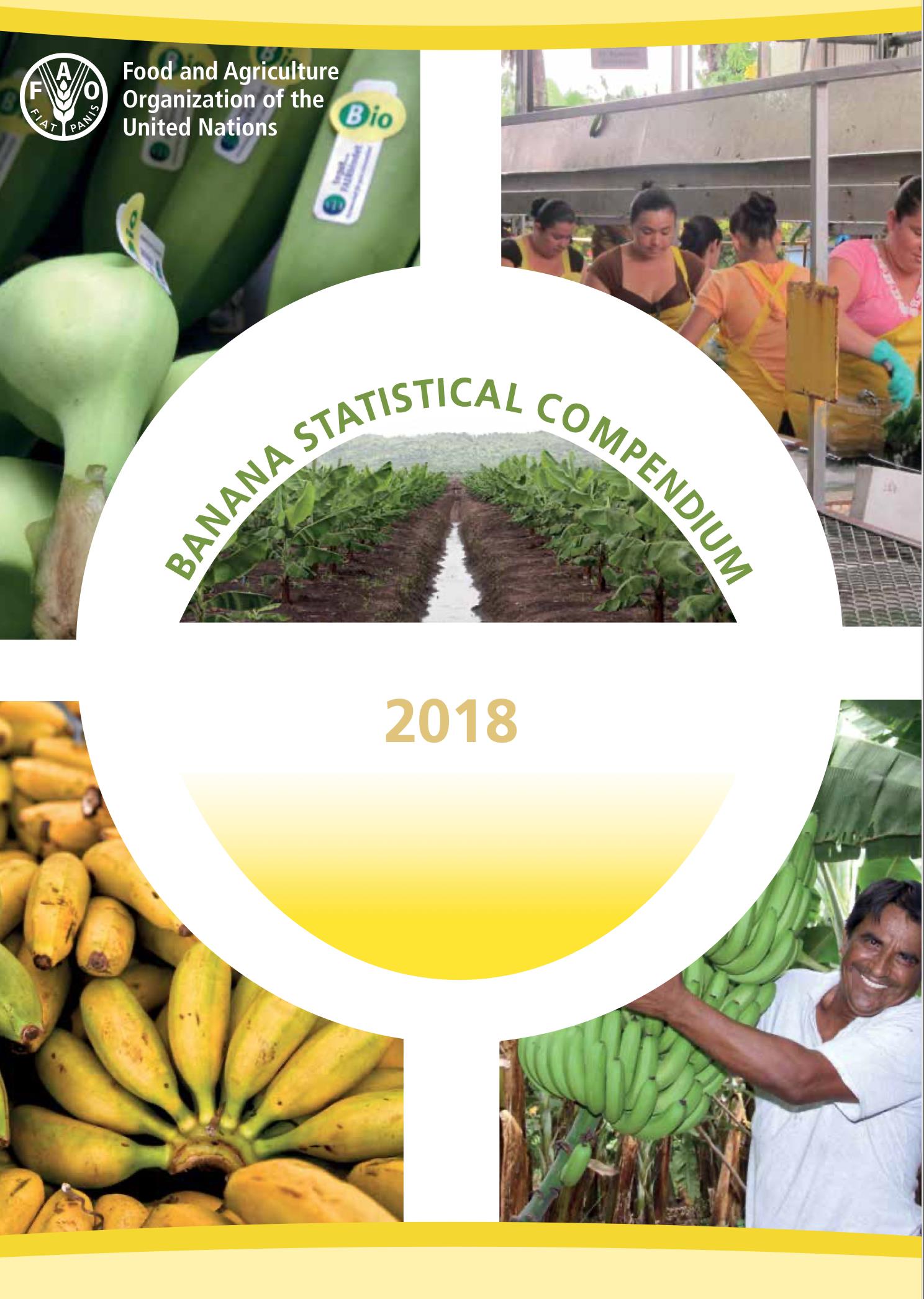
Banana Statistical Compendium 2018
09/05/2019
The Banana Statistical compendium, issued once a year, contains information on global banana trade. Its sources include information provided by FAO member nations, traders, news bulletins and the opinions of commodity specialists and represents the most authoritative and up-to-date source of information on the world banana economy.
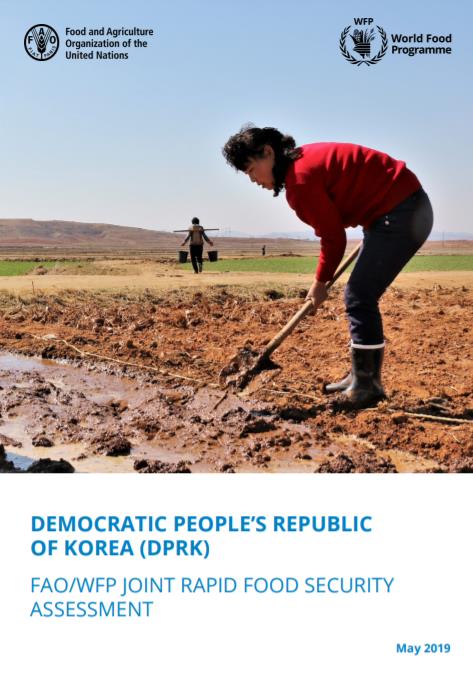
Special Report - FAO/WFP Joint Rapid Food Security Assessment to the Democratic People's Republic of Korea
03/05/2019
At request of the government, a joint FAO/WFP rapid Food Security Assessment Mission (rFSA) visited DPRK from 29 March to 12 April 2019. The overall objective of the joint FAO/WFP mission was to conduct an independent assessment of the 2018 production shortfall and the food security situation in the country. Provision of accurate, timely and credible information through this exercise is critical to inform appropriate interventions by the government, the international community, and others to mitigate the impact of the reported drops in harvest output.
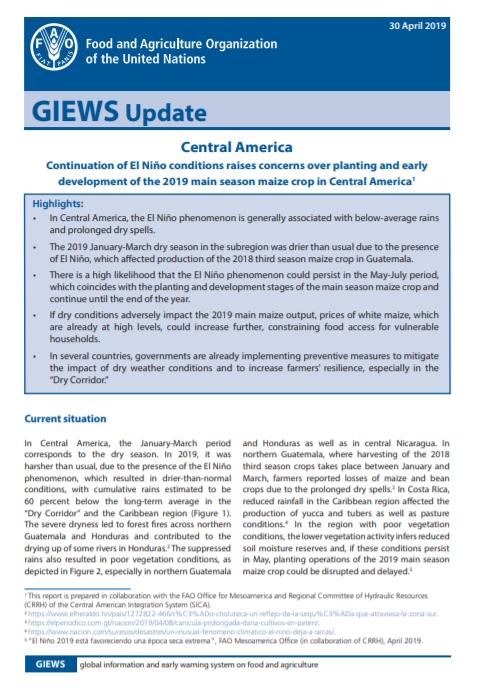
GIEWS Update - Central America, 30 April 2019
30/04/2019
In Central America, the El Niño phenomenon is generally associated with below-average rains and prolonged dry spells. The 2019 January-March dry season in the subregion was drier than usual due to the presence of El Niño, which affected production of the 2018 third season maize crop in Guatemala.
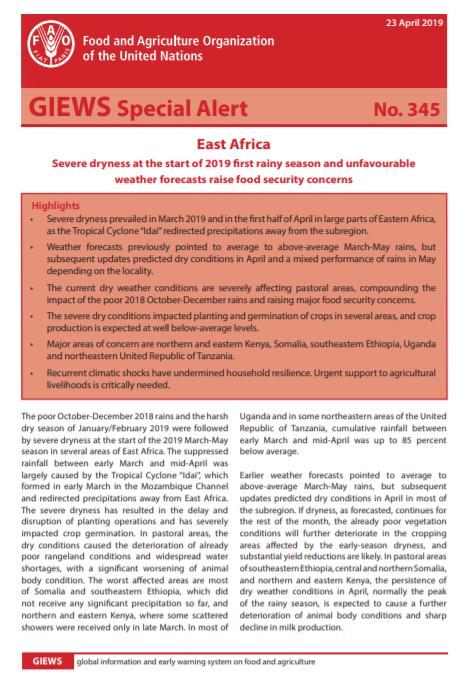
GIEWS Special Alert No. 345 - East Africa, 23 April 2019
23/04/2019
Severe dryness prevailed in March 2019 and in the first half of April in large parts of Eastern Africa, as the Tropical Cyclone “Idai” redirected precipitations away from the subregion. Weather forecasts previously pointed to average to above-average March-May rains, but subsequent updates predicted dry conditions in April and a mixed performance of rains in May depending on the locality. The current dry weather conditions are severely affecting pastoral areas, compounding the impact of the poor 2018 October-December rains and raising major food security concerns. The severe dry conditions impacted planting and germination of crops in several areas, and crop production is expected at well below-average levels. Major areas of concern are northern and eastern Kenya, Somalia, southeastern Ethiopia, Uganda and northeastern United Republic of Tanzania. Recurrent climatic shocks have undermined household resilience. Urgent support to agricultural livelihoods is critically needed.
